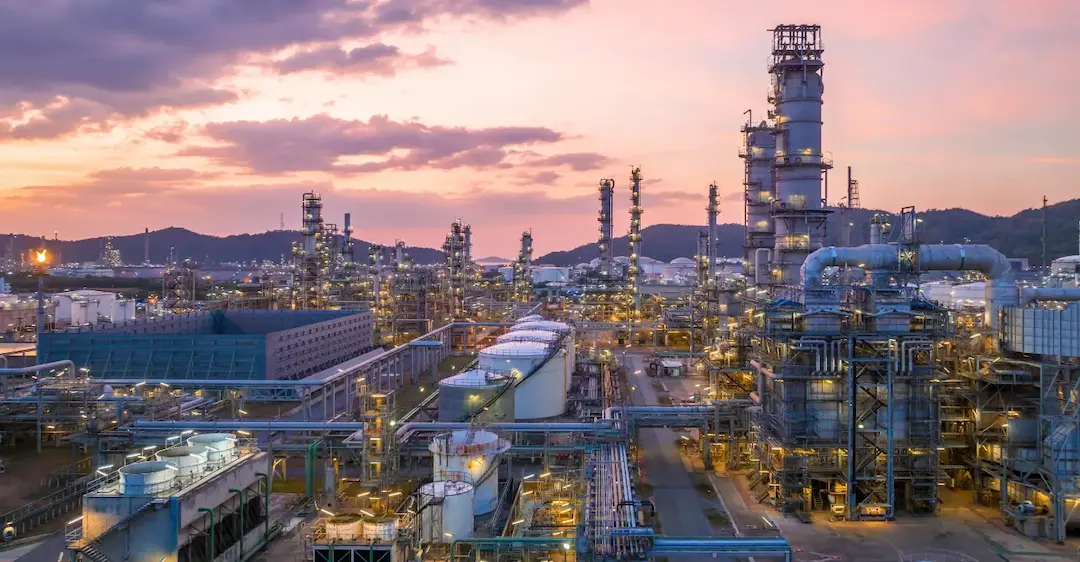Oil has been a critical energy source for over a century, powering industries, transportation, and economies globally. Despite growing concerns about climate change and the transition to renewable energy, the oil and gas sector remains a dominant force in the global economy. The largest oil companies, often referred to as “oil giants,” control a significant portion of the world’s petroleum production, refining, and distribution networks. These companies not only generate billions of dollars in revenue but also shape global energy policies and markets.
This article provides an in-depth analysis of the ten biggest oil companies worldwide, ranked by their trailing 12-month (TTM) revenue, as of December 2024. This list includes companies from the U.S., Saudi Arabia, China, the U.K., and France, representing the global reach of the oil and gas industry. We will delve into their financials, operations, market cap, and influence within the energy sector.
1. Saudi Arabian Oil Co. (Saudi Aramco)
- Revenue (TTM): $590.3 billion
- Net Income (TTM): $156.5 billion
- Market Cap: $1.8 trillion
- 1-Year Trailing Total Return: -3.7%
- Exchange: Saudi Arabian Stock Exchange
Saudi Aramco is the undisputed leader in the global oil industry, both in terms of revenue and production capacity. Based in Saudi Arabia, it is the world’s largest integrated oil and gas company, responsible for managing the Kingdom’s vast oil reserves. Saudi Aramco’s operations span the entire oil and gas value chain, including exploration, production, refining, and distribution. The company’s vast oil fields, such as Ghawar (the largest onshore oil field), enable it to produce more than 10 million barrels of oil per day.
Despite challenges in recent years due to fluctuations in oil prices, Saudi Aramco remains a dominant player, with substantial investments in innovation and exploration. Its market capitalization, which exceeds $1.8 trillion, solidifies its position as one of the most valuable companies in the world. Although it is not traded on U.S. exchanges, Saudi Aramco’s influence extends far beyond Saudi Arabia, with its oil products reaching markets across Asia, Europe, and the U.S.
2. China Petroleum & Chemical Corp. (SNPMF)
- Revenue (TTM): $486.8 billion
- Net Income (TTM): $10.1 billion
- Market Cap: $57.91 billion
- 1-Year Trailing Total Return: 17.45%
- Exchange: OTC Markets
China Petroleum & Chemical, better known as Sinopec, ranks as the second-largest oil company globally by revenue. Sinopec is one of the most influential oil refining, gas, and petrochemical companies, with a vast network of facilities in China and beyond. The company is a key player in China’s oil industry, producing and distributing petroleum products such as gasoline, diesel, kerosene, synthetic rubbers, and jet fuel.
Sinopec’s financial strength is evident in its substantial revenue, though its profit margins are considerably lower than those of some of its Western counterparts. Sinopec is also a major player in the petrochemical sector, producing a wide range of chemicals, including fertilizers and synthetic materials. In addition to its role as a producer, Sinopec is involved in a variety of environmental and sustainable energy initiatives aimed at reducing its carbon footprint and increasing its investments in renewable energy sources.
3. PetroChina Co. Ltd. (PCCYF)
- Revenue (TTM): $486.4 billion
- Net Income (TTM): $20.9 billion
- Market Cap: $78.7 billion
- 1-Year Trailing Total Return: 12.5%
- Exchange: OTC Markets
PetroChina is the publicly listed unit of the state-owned China National Petroleum Corporation (CNPC) and is the largest oil and gas producer in China. PetroChina plays a crucial role in the country’s oil and gas market, contributing roughly 50% of the country’s domestic oil production and 60% of its natural gas production.
As one of the largest oil companies globally, PetroChina’s operations span exploration, production, refining, and distribution. It has significant upstream activities, particularly in the vast oil fields of China and abroad, including in Kazakhstan and Africa. The company has also made notable advancements in natural gas development, positioning itself as a key player in China’s energy transition to cleaner fuels.
4. Exxon Mobil Corp. (XOM)
- Revenue (TTM): $386.8 billion
- Net Income (TTM): $51.9 billion
- Market Cap: $445 billion
- 1-Year Trailing Total Return: 85.6%
- Exchange: New York Stock Exchange
Exxon Mobil is one of the oldest and most renowned oil companies in the world. Headquartered in Irving, Texas, Exxon Mobil operates across every aspect of the oil and gas industry, including exploration, production, refining, and marketing. The company is also heavily involved in the chemical manufacturing sector, producing a range of petrochemicals and plastics.
Exxon’s financial performance is impressive, with its high profitability and massive market capitalization making it one of the most powerful companies globally. Exxon has maintained its dominance by continually investing in technological innovations and cost-effective operations, including advancements in liquefied natural gas (LNG) and carbon capture technologies. Its diverse operations allow Exxon to weather volatile oil prices better than many competitors.
5. Shell PLC (SHEL)
- Revenue (TTM): $365.3 billion
- Net Income (TTM): $43.4 billion
- Market Cap: $201.8 billion
- 1-Year Trailing Total Return: 37.47%
- Exchange: New York Stock Exchange
Shell is another major player in the global oil and gas market, with a presence in over 70 countries. Like Exxon, Shell is a fully integrated energy company, engaging in exploration, production, refining, distribution, and marketing of oil and natural gas products. The company has been transitioning towards cleaner energy, investing in renewable energy sources, electric vehicle charging infrastructure, and sustainable biofuels.
Shell’s strong revenue generation comes from its vast network of refineries, oil rigs, and gas stations worldwide. With its comprehensive business model, Shell is well-positioned to continue leading the industry, even as the world increasingly shifts towards cleaner energy alternatives.
6. TotalEnergies SE (TTE)
- Revenue (TTM): $254.7 billion
- Net Income (TTM): $23.1 billion
- Market Cap: $157.1 billion
- 1-Year Trailing Total Return: 34.3%
- Exchange: New York Stock Exchange
TotalEnergies, headquartered in France, has transformed from a traditional oil company to a more diversified energy provider. The company has increasingly focused on renewable energy sources, such as solar and wind power, while still maintaining a strong presence in oil and natural gas. TotalEnergies has operations in over 130 countries and is one of the largest producers of natural gas and liquefied natural gas (LNG).
The company’s commitment to sustainability is evident in its growing investments in cleaner energy solutions, including electric vehicle charging infrastructure and energy-efficient technologies. TotalEnergies aims to balance the global demand for oil with the need for cleaner, more sustainable energy sources.
7. Chevron Corp. (CVX)
- Revenue (TTM): $227.1 billion
- Net Income (TTM): $34.2 billion
- Market Cap: $337.8 billion
- 1-Year Trailing Total Return: 56.8%
- Exchange: New York Stock Exchange
Chevron, based in San Ramon, California, is one of the largest integrated energy companies in the world. Its upstream operations involve the exploration and production of oil and natural gas, while its downstream activities include refining, transportation, and marketing. Chevron also has a growing portfolio of chemicals, biofuels, and low-carbon energy solutions.
Chevron’s robust financials, driven by its diverse operations and focus on high-return projects, place it among the most valuable companies in the energy sector. Chevron is also actively pursuing renewable energy technologies and exploring carbon capture and storage (CCS) to mitigate the environmental impact of its operations.
8. BP PLC (BP)
- Revenue (TTM): $222.7 billion
- Net Income (TTM): -$11 billion
- Market Cap: $105.3 billion
- 1-Year Trailing Total Return: 38.4%
- Exchange: New York Stock Exchange
BP, formerly British Petroleum, has undergone significant changes in recent years. The company has shifted its focus from traditional oil and gas to becoming an integrated energy company that prioritizes sustainability and renewable energy. BP is involved in oil exploration, refining, and distribution but is increasingly investing in clean energy sources, such as wind and solar power.
Although BP has faced challenges with its profitability, particularly due to the environmental and financial impacts of some of its operations, the company remains a key player in the global energy transition.
9. Marathon Petroleum Corp. (MPC)
- Revenue (TTM): $173 billion
- Net Income (TTM): $12 billion
- Market Cap: $57.1 billion
- 1-Year Trailing Total Return: 85.3%
- Exchange: New York Stock Exchange
Marathon Petroleum is the largest independent petroleum refiner in the U.S., with a significant market share in refining and retail. The company operates a vast network of refineries and retail outlets under the Marathon brand, and its petroleum products are sold across the United States.
Marathon has a strong financial track record, thanks to its efficient operations and low-cost refining processes. The company also has interests in renewable fuels, such as ethanol and biodiesel, as part of its strategy to diversify its energy portfolio.
10. Valero Energy Corp. (VLO)
- Revenue (TTM): $170.5 billion
- Net Income (TTM): $9.4 billion
- Market Cap: $47.3 billion
- 1-Year Trailing Total Return: 78.3%
- Exchange: New York Stock Exchange
Valero is the largest independent petroleum refiner globally and the second-largest producer of renewable fuels. The company owns and operates 15 refineries across the U.S., Canada, and the U.K., producing a wide range of products, including gasoline, diesel, and jet fuel. Valero is also a major producer of ethanol and biodiesel, positioning itself as a leader in renewable fuels.
Conclusion
The largest oil companies in the world continue to exert significant influence on the global energy landscape. While many of these companies are investing in renewable energy and diversifying their portfolios, oil and gas remain at the core of their operations. As the world transitions toward cleaner energy, these companies will play a crucial role in navigating the shift, balancing economic growth with environmental sustainability. Despite challenges from environmental regulations and public scrutiny, the oil giants remain fundamental to the functioning of the global economy.



